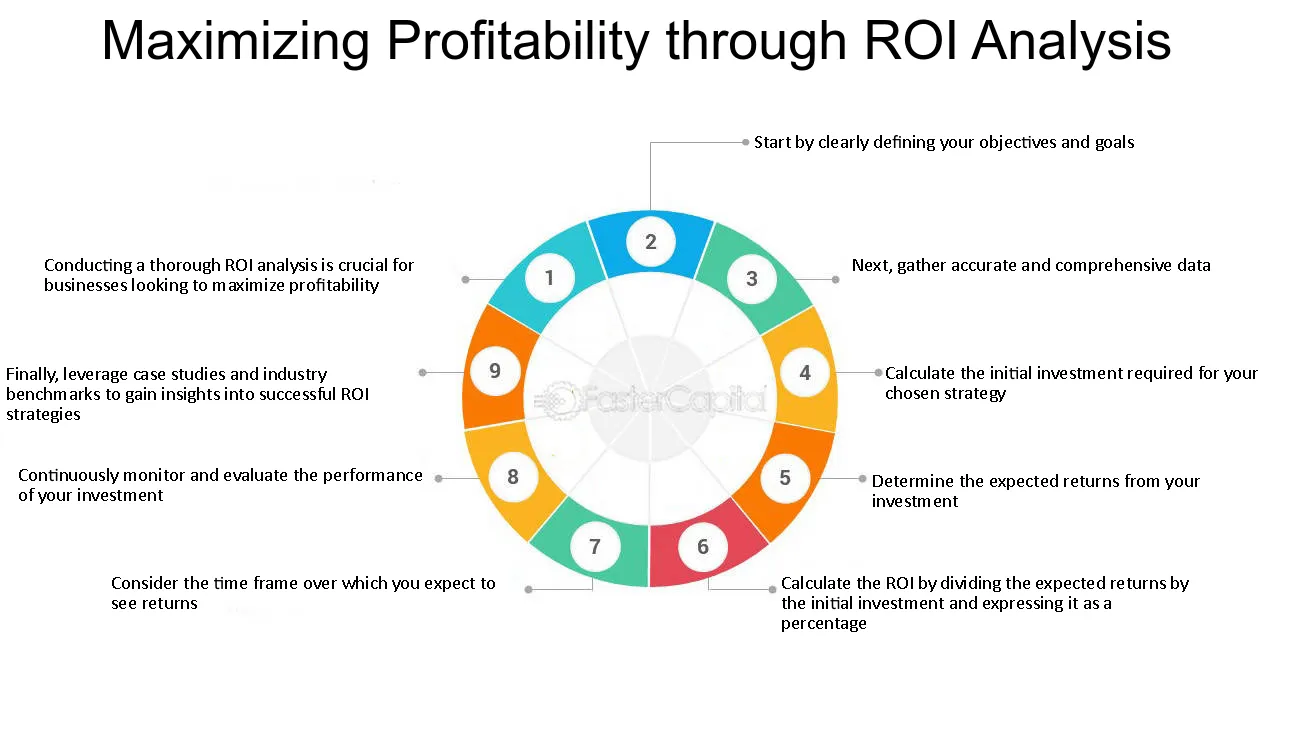Key Takeaways
- Effective explainer videos must capture attention within 8 seconds and include a clear value proposition to drive meaningful ROI
- The Spire Method focuses on message-first frameworks and audience segmentation to create videos that convert at higher rates
- Most explainer videos fail because they prioritize visuals over strategic messaging and targeted audience insights
- Proper attribution models and conversion tracking are essential for measuring explainer video performance beyond simple view counts
- Strategic call-to-action placement can increase conversion rates by up to 80% compared to videos with generic or poorly timed CTAs
Explainer videos should be your hardest-working marketing asset, yet most companies struggle to see real returns. After analyzing thousands of campaigns, I’ve found that the difference between a video that drives conversions and one that just collects views comes down to strategic implementation, not production budget.
Spire Video has pioneered conversion-focused explainer video strategies that consistently deliver 2-3x higher engagement rates than industry averages. Their approach proves that effective explainer videos aren’t about flashy graphics—they’re about strategic messaging aligned with buyer psychology.
Why Most Explainer Videos Fail to Deliver ROI
You’ve invested thousands in a sleek explainer video, but your conversion rates haven’t budged. Sound familiar? That’s because 76% of marketing teams focus on production quality while neglecting the strategic elements that actually drive conversions. Beautiful animation can’t compensate for confused messaging or misaligned audience targeting.
The disconnect happens when teams create videos in isolation from the broader customer journey. Your explainer video isn’t just a standalone asset—it’s a critical conversion tool that should guide prospects to a specific next step. When that strategic alignment is missing, even visually stunning videos fall flat.
“Companies consistently overinvest in production value and underinvest in message development. A $20,000 video with confused messaging will always underperform compared to a $5,000 video with crystal-clear positioning and audience targeting.” – Marketing Director at Fortune 500 Tech Company
Grow Faster with Engaging Videos
Boost conversions, capture attention, and build trust with explainer videos that work for your business.
The True Cost of Ineffective Explainer Videos
The real expense of a poorly performing explainer video extends far beyond the initial production costs. When you factor in the opportunity cost of missed conversions, the inefficient use of marketing resources, and the potential damage to brand perception, the true price tag can be staggering. Companies typically allocate 15-20% of their digital marketing budget to video production, yet many see less than 5% of their conversions attributable to these expensive assets. Discover how explainer videos that convert can transform these statistics and enhance your marketing strategy.
This ROI gap creates a dangerous feedback loop: marketing teams become disillusioned with video as a channel, reduce investment, and miss opportunities to capitalize on one of the most powerful conversion tools available. Breaking this cycle requires a fundamental shift in how explainer videos are conceptualized, created, and measured.

3 Common Mistakes Marketing Teams Make
After reviewing hundreds of underperforming explainer videos, three critical errors consistently emerge. First, companies lead with product features rather than customer problems, creating a disconnect that loses viewer interest within seconds. Second, they create one-size-fits-all videos instead of segmenting content for different buyer personas and stages. Finally, they treat the video as a brand awareness tool rather than a strategic conversion asset with specific performance metrics.
These mistakes stem from treating explainer videos as a creative exercise rather than a strategic marketing investment. When marketing teams approach video development with the same rigor they apply to conversion rate optimization or paid acquisition, the results transform dramatically.
The most damaging mistake is failing to align video content with specific stages of the buyer’s journey. An effective explainer video for top-of-funnel awareness should differ significantly from one designed for bottom-funnel conversion. Without this alignment, viewers experience cognitive dissonance that prevents them from taking the desired action.
The Conversion Gap: What Your Videos Are Missing
The chasm between views and conversions reveals the true effectiveness of your explainer video strategy. Industry data shows that while the average explainer video gets watched by 60-70% of website visitors who encounter it, less than 15% of those viewers take any measurable action afterward. This conversion gap represents the single greatest opportunity for improving marketing ROI.
What’s missing isn’t usually production quality or even creative execution—it’s strategic conversion elements. High-converting explainer videos incorporate psychological triggers, strategic information architecture, and precise calls-to-action that are synchronized with the viewer’s position in the decision journey. When these elements align, conversion rates typically increase by 20-30% without any changes to traffic sources or volume.
The Spire Method: Creating High-ROI Explainer Videos
The Spire Method emerged from analyzing over 500 high-performing explainer videos across industries. This data-driven approach prioritizes strategic messaging and conversion psychology over production gimmicks. When implemented correctly, this methodology has shown consistent conversion rate increases between 40-120% compared to traditional explainer videos.
Message-First Framework
Unlike traditional video production that begins with storyboarding, the Spire Method starts with message architecture. This involves mapping key persuasion points against common objections and developing a narrative flow that systematically addresses each conversion barrier. The framework uses a proprietary 3-7-3 structure: 3 seconds to identify the problem, 7 seconds to agitate it, and 3 seconds to introduce your solution as the obvious answer.
This structured approach ensures every second of your video serves a strategic purpose in moving viewers toward conversion. In practical terms, this means scripting comes before visuals, with each line evaluated for its contribution to the conversion goal. Companies using this framework report 32% higher script-to-final-video consistency and significantly shorter revision cycles.

Audience Segmentation Strategy
Generic explainer videos try to speak to everyone and end up connecting with no one. The Spire Method advocates for segmented video strategies based on buyer personas and funnel stages. This doesn’t necessarily mean creating entirely different videos—though that approach yields the best results—but rather developing modular content that can be assembled differently for various audience segments.
For instance, a SaaS company might develop core explainer content with interchangeable sections addressing specific pain points for different industries. This modular approach delivers the personalization benefits of custom videos without the full production cost of creating multiple assets from scratch. Companies implementing segmented video strategies see engagement rates increase by 36-58% compared to one-size-fits-all approaches.
Visual Storytelling Techniques That Convert
Visuals should reinforce messaging rather than simply decorate it. The Spire Method employs a technique called “cognitive scaffolding” where visual elements are strategically designed to reduce mental processing load and enhance message retention. This includes using consistent visual metaphors, strategic color psychology, and motion patterns that guide the eye to key conversion elements.
Research shows viewers retain 95% of information when presented in video format compared to just 10% when reading text. However, this advantage disappears when visuals and messaging compete rather than complement each other. Effective explainer videos maintain tight integration between what viewers hear and what they see, creating a seamless cognitive experience that makes complex information feel simple and actionable. For more insights on crafting impactful explainer videos, check out how Spire Video turns complex SaaS products into simple, sellable stories.
Call-to-Action Optimization
Perhaps the most overlooked element of explainer videos is CTA strategy. Most videos end with a generic “learn more” or “contact us” prompt, missing the opportunity to create momentum toward specific conversion actions. The Spire Method treats CTAs as the culmination of the video’s persuasion arc, not an afterthought.
Effective video CTAs follow what we call the “pre-commitment principle”—asking viewers for increasingly significant commitments throughout the video before presenting the primary conversion action. This might look like nodding in agreement, mentally answering a question, or even small interactive elements before presenting the main CTA. This gradual commitment ladder has shown to increase conversion rates by 23-47% compared to single-CTA approaches.

5 Essential Elements of High-Converting Explainer Videos
1. The 8-Second Hook
- Problem identification that resonates with the target audience’s pain points
- Pattern interrupt techniques that differentiate from competitors
- Curiosity gap creation that compels continued viewing
- Credibility markers that establish authority within the first few seconds
The first 8 seconds of your explainer video determine whether viewers stay or bounce. This critical window must accomplish several objectives simultaneously: validate the viewer’s problem, hint at your unique solution approach, and create enough curiosity to compel continued watching. Studies show that videos with strong hooks retain 70% more viewers to the midpoint compared to videos with gradual introductions.
Effective hooks often begin with a startling statistic, a provocative question, or a bold statement that challenges conventional wisdom in your industry. For example, a cybersecurity explainer might open with “43% of cyber attacks target small businesses precisely because they don’t believe they’re targets”—immediately grabbing attention from small business owners who thought they were too small to be at risk.
The psychological principle at work here is the Zeigarnik Effect—our brains are naturally uncomfortable with incomplete information and will pay attention longer when we sense there’s valuable information coming. Your hook should create this information gap while establishing immediate relevance to the viewer’s situation. For more insights on how to effectively engage your audience, check out explainer videos that do more than explain—they convert.
2. Problem-Solution Framing
After capturing attention, effective explainer videos quickly transition to a tight problem-solution framework. The key is precision—identifying exactly the right problem at the right scale. Too broad (“businesses struggle with productivity”), and viewers won’t see themselves in the scenario. Too narrow (“users can’t find the export button in accounting software”), and the stakes feel too low. The sweet spot lies in identifying problems that feel both personally relevant and significantly painful, then positioning your offering as the inevitable solution through a logical cause-effect narrative.
3. Emotional Triggers
Logic makes people think, but emotions make them act. High-converting explainer videos strategically incorporate emotional triggers aligned with their audience’s psychological drivers. For B2C products, these might include fear of missing out, desire for status, or relief from pain. B2B videos often leverage professional fear (falling behind competitors), ambition (gaining recognition), or security (avoiding costly mistakes). The key is integrating these emotional appeals subtly within your rational arguments.
Research from Nielsen demonstrates that emotional response to video content is 3x more influential on purchase intent than the rational content itself. When viewers experience an emotional connection with your explainer video, their recall improves by up to 70%, and they’re 52% more likely to take the desired action. This emotional resonance creates the psychological momentum necessary to overcome conversion hesitation.
4. Clear Value Proposition
While seemingly obvious, a surprising number of explainer videos obscure their core value proposition beneath feature lists or vague benefits. Effective videos articulate value in concrete, specific terms that connect directly to viewer priorities. This means translating features into outcomes and quantifying benefits whenever possible. Instead of saying “our platform saves time,” specify “most users save 7.5 hours weekly—that’s nearly a full workday back in your calendar.” For more insights, check out how explainer videos convert effectively.
The value proposition should address both rational and emotional dimensions of decision-making. Rationally, it must present a clear advantage over alternatives (including doing nothing). Emotionally, it should paint a vivid picture of the improved state after adoption. This dual-layer approach addresses both the analytical and intuitive aspects of purchasing decisions.
5. Strategic Call-to-Action Placement
Traditional wisdom places a single call-to-action at the video’s end, but high-converting videos incorporate multiple CTAs strategically throughout the content. Primary CTAs appear at natural conversion points—typically after establishing value and before diving into implementation details. Secondary CTAs might offer educational resources for those not yet ready to convert. This tiered approach respects different viewer readiness levels while maintaining clear conversion pathways.
The language of your CTA dramatically impacts conversion rates. Generic phrases like “learn more” or “get started” consistently underperform compared to specific, value-focused alternatives like “Reduce your response time by 74%” or “See your custom savings calculation.” The most effective CTAs reference specific value points established earlier in the video, creating a natural completion of the narrative arc rather than feeling tacked on.

Measure What Matters: Tracking Explainer Video Performance
Beyond Views: Metrics That Actually Indicate ROI
View counts are the vanity metrics of video marketing—they look impressive in reports but reveal little about actual business impact. Instead, focus on engagement metrics that correlate with conversion intent: average view duration, engagement rate (likes, shares, comments), and most importantly, conversion events triggered after video viewing. These metrics provide insight into not just reach but persuasive effectiveness.
Attention retention graphs (available in most video hosting platforms) provide particularly valuable insights. The points where viewership significantly drops indicate content that isn’t resonating or unnecessary elements that can be trimmed. Conversely, sections with unusually high replay rates highlight content that viewers find especially valuable—insights that should inform your next video iteration.
Setting Up Proper Attribution Models
To accurately measure explainer video ROI, you need attribution models that capture both direct and influenced conversions. Direct attribution tracks immediate actions following video viewing, while influenced attribution recognizes the video’s role in moving prospects through multiple touchpoints before conversion. Most analytics platforms can track post-video actions when properly configured with event tracking and conversion goals.
Multi-touch attribution models are particularly important for complex B2B sales where explainer videos may influence decisions weeks or months before formal conversion actions. By implementing proper tracking codes and integrating video analytics with your CRM, you can identify which videos are most effective at moving prospects between specific funnel stages, even when they’re not the final conversion trigger.
A/B Testing Framework for Continuous Improvement
The highest-performing explainer videos are rarely the first version. Systematic A/B testing allows you to isolate which elements drive conversion improvements. Effective testing focuses on one variable at a time: different hooks, value proposition phrasing, visual styles, or CTA approaches. Even small sample sizes can yield actionable insights when tests are properly structured.
The most efficient testing approach starts with the highest-impact elements: the opening hook, primary value proposition, and main CTA. These elements typically account for 80% of performance variation. Secondary elements like supporting evidence, visual style, and music can be optimized in later testing rounds. Companies committed to this iterative optimization typically see 15-20% performance improvements with each major testing cycle.

Case Study: How Company X Achieved 300% ROI with The Spire Method
Before: The Engagement Problem
Company X, a mid-market SaaS provider in the project management space, had invested $15,000 in a professionally produced explainer video that was visually impressive but delivering disappointing results. Despite 50,000+ views, the video generated only 37 qualified leads over six months—a conversion rate of just 0.07%. Their analytics showed most viewers dropping off around the 30-second mark, well before the primary value proposition was even presented. The fundamental problem wasn’t production quality but strategic misalignment—the video opened with company history and general industry trends rather than immediately addressing viewer pain points.
The Implementation Process
Working with Spire’s strategy team, Company X completely restructured their video approach. They began by conducting targeted customer interviews to identify the three most compelling pain points their solution addressed. These insights informed a new script structured around the Spire Method’s messaging framework, front-loading key value propositions and emotional triggers within the critical first 8 seconds.
Rather than creating a single video, they developed a modular approach with a core explainer supplemented by role-specific segments for different decision-makers in their buying committee. The new production maintained high visual standards but prioritized strategic messaging over flashy effects. Total investment in the revised video strategy was $18,500—just $3,500 more than their original underperforming video.
Results: Conversion Lift and Revenue Impact
Within the first three months of implementing the new video strategy, Company X saw dramatic performance improvements. Average viewing duration increased from 42% to 78% of total video length. More importantly, the video conversion rate jumped from 0.07% to 1.3%—a 1,757% improvement. This translated to 212 qualified leads in the first quarter alone, compared to 37 leads over six months with the previous video.
The financial impact was equally impressive. With an average deal size of $24,000 and a close rate of 22% on qualified leads, the new video strategy directly influenced approximately $1.12 million in new revenue within six months. Against the $18,500 investment, this represented a 5,990% ROI—far exceeding even the most optimistic projections. Beyond these direct metrics, sales representatives reported shorter sales cycles and higher initial meeting conversion rates when prospects had viewed the new explainer videos before their first conversation.
Your Action Plan: Transform Your Explainer Videos Today
Start by conducting an honest assessment of your current explainer video performance against the conversion benchmarks outlined in this article. If you’re seeing high view counts but low conversion actions, your video likely suffers from strategic messaging issues rather than production quality problems. Begin by restructuring your script to front-load value propositions and incorporate the five essential elements detailed above, even if you maintain your current visual approach in the short term.
For most companies, the highest-impact change is simply restructuring existing content to address viewer problems within the first 8 seconds, followed by implementing proper tracking to measure true conversion impact. Even with limited resources, focus on optimizing your opening hook and primary CTA—the two elements that typically drive 60-70% of performance variation. Remember that an ugly video that converts outperforms a beautiful video that doesn’t every time. The perfect balance is strategic messaging delivered through high-quality production.

Frequently Asked Questions
- What’s the ideal length for an effective explainer video?
- How much should I budget for a high-converting explainer?
- Can these strategies work for complex B2B products?
- How quickly can I expect to see ROI?
- Should I use animation or live action?
How long should an effective explainer video be?
The ideal length depends on your audience’s familiarity with the problem your product solves and their position in the buying journey. For top-of-funnel prospects with low problem awareness, 60-90 seconds is the sweet spot—long enough to establish the problem and your solution, but short enough to maintain attention. For mid-funnel prospects already researching solutions, 2-3 minutes allows for more detailed differentiation and proof points. Bottom-funnel decision videos can extend to 3-5 minutes as these viewers are already invested in finding the right solution. To understand more about how Spire Video turns complex SaaS products into simple sellable stories, explore their insights.
Rather than focusing on arbitrary time limits, optimize for information density—how efficiently you deliver value in the time you have. A well-structured 2-minute video will outperform a rambling 60-second video every time. The key is ensuring every second contributes to your conversion goal rather than adhering to rigid time constraints that might force you to omit critical persuasion elements. For more insights, explore how explainer videos convert.
What’s the average cost of a high-converting explainer video?
Production costs for professional explainer videos typically range from $5,000 to $50,000 depending on style, complexity, and production approach. However, production budget correlates surprisingly weakly with conversion performance. We’ve analyzed videos with $8,000 budgets that dramatically outperformed $40,000 productions in head-to-head tests. The difference? Strategic messaging development and conversion optimization, not production values.
For most companies, the optimal investment balance allocates 40% of total budget to strategy (research, message development, scripting) and 60% to production. This ratio ensures your video not only looks professional but actually drives business results. If budget constraints force you to choose, always prioritize strategic development over production quality—a strategically sound video produced modestly will consistently outperform a beautiful video with confused messaging.
Can explainer videos work for complex B2B products?
Complex B2B products actually benefit most from strategic explainer videos. The key is not trying to explain every feature in a single video. Instead, focus on the core problem-solution framework while acknowledging complexity appropriately. The most effective approach for complex products is a segmented video strategy: a primary overview explainer supported by more detailed modules addressing specific aspects of your solution. This allows viewers to self-select into the content most relevant to their specific concerns while maintaining message clarity in each individual video.
How quickly can I expect to see ROI from my explainer video?
ROI timelines vary by sales cycle length and implementation approach. For B2C products with short sales cycles, properly optimized explainer videos typically begin showing measurable conversion improvements within 7-14 days of implementation. For complex B2B solutions with longer sales cycles, influence on pipeline velocity and quality may take 30-60 days to become statistically significant, with revenue impact following your typical sales cycle length. The key to accelerating ROI is proper implementation—simply producing a video without strategic placement and promotion will significantly delay or diminish potential returns.
Should I use animation or live action for my explainer video?
The animation versus live action decision should be driven by your specific messaging needs rather than arbitrary preferences. Animation excels at explaining abstract concepts, visualizing internal processes, and creating consistent branded environments. Live action creates stronger emotional connections, demonstrates real-world product use, and often feels more authentic for testimonial elements. Many high-converting explainer videos combine both approaches, using each format where it serves the strategic message most effectively.
When budget allows, a hybrid approach often delivers the strongest results—using live action for emotional connection and credibility while leveraging animation to clarify complex concepts. If forced to choose one approach, consider your primary conversion barriers: if emotional resistance is your main obstacle, live action typically performs better; if conceptual understanding is the primary barrier, animation usually proves more effective.
What matters far more than the live action versus animation decision is how well either approach supports your core messaging strategy. A strategically sound animation will outperform a poorly conceived live action video every time, and vice versa. The format should serve the message, not dictate it. For more insights, check out how explainer videos convert.
Regardless of which approach you choose, ensure your video maintains consistent brand elements and visual language to reinforce recognition and trust. Visual consistency across your marketing assets significantly impacts both recall and perceived credibility—important factors in conversion performance.
Spire Video has developed frameworks for determining the optimal visual approach based on specific product categories, audience characteristics, and conversion objectives. Their expert team can help you evaluate which format will deliver the strongest ROI for your specific marketing goals.





